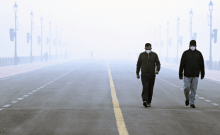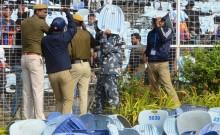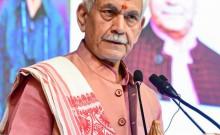
The basics of India's Independence are known to all: Jawaharlal Nehru, as leader of the Congress, signed the declaration of Independence just after midnight on Aug. 15, 1947, and delivered the famous "Tryst with Destiny" speech — which can be read here — to declare that India was no longer governed by the British.
Now, here are some lesser-known facts about India's struggle that led to the country's freedom, and the Independence Day in particular:
- India became independent through the Indian Independence Act 1947 of the United Kingdom Parliament. The act received consent from the British monarchy in July 1947, and India received independence on Aug. 15, 1947. However, the act also resulted in the partition of India, which created East and West Pakistan.
- East Pakistan would subsequently go on to achieve Independence from Pakistan and become Bangladesh in 1971. Ironically, Bangladesh observes Aug. 15 as National Mourning Day, following the assassination of politician Sheikh Mujibir Rahman and his family on that date in 1975.
- When the British were considering giving India independence, they had said it would be done latest by June 1948. However, the then Viceroy of India, Lord Louis Mountbatten, moved up the date to Aug. 15 to coincide with the second anniversary of Japan's surrender to the Allied Forces and the formal end of World War II.
- Incidentally, with the surrender of Japan, Korea — now divided into North Korea and South Korea — became independent in 1945. Now, both Koreas share their Independence Day with India.
- Aug. 15 was also the day the Republic of Congo gained independence from France in 1960, and celebrates it accordingly.
- Aug. 15 holds much more importance in Indian history than being just the Independence Day. It has been an important date for India long before 1947. What is currently known as the Mohun Bagan Athletic Club was founded in 1889 on Aug. 15 as the Mohun Bagan Sporting Club. Its players created history by becoming the first Indian team to lift the Calcutta Shield in 1911. The win was also significant because the losing team, Middlesex Regiment, wore boots while Mohun Bagan players were barefoot.
- Social reformer Aurobindo Ghose was born on Aug. 15, 1872.
- Noted writer Khushwant Singh, in his memoir "Truth, Love and a Little Malice," said he was born in the monsoon months, but no one ever kept record of the day. He would later choose Aug. 15 as his date of birth.
- Ustad Amir Khan, the founder of the Indore Gharana of Indian classical music, was born on Aug. 15, 1912.
- Cartoonist Pran, famous for giving us Chacha Chaudhary, who had "brains faster than computer," was born on Aug. 15, 1938.
- However, when it comes to birthdays on this day, actress Rakhee Gulzar's is the most pertinent, since she was born on Aug. 15, 1947.
- Aug. 15, 1969, saw the inauguration of the Woodstock Festival, what was to become the biggest icon of peace and non-violent protests in the era.
- Interestingly, had the Indian National Congress had its way, India's Independence Day would have been on Jan. 26, because this was the day the party, in its Lahore session in late 1929, had chosen while promulgating the "Declaration of the Independence of India." The date would be later chosen as India's Republic Day, when the country got its Constitution.
Want to watch the Indipendence Day celebrations live online? Tune in here!










